An air conditioning unit is a luxury, especially when it’s sweltering outside. Being able to escape the heat in the comfort of your own home is enormous. But, like most luxuries, your AC unit can cost you.
In fact, According to ENERGY STAR reports, nearly 13% of the average American household’s utility bill goes toward cooling costs. And with an average annual bill of over $2,000, that means you’ll likely spend at least $250 keeping your air conditioner running each year.
Fortunately, choosing the right AC unit helps you keep those costs as low as possible while still delivering the cooling you need and we’ve created this AC buying a guide to help.
Types of Air Conditioning Units
To start with, there are various types of AC units. And having an understanding of what they are will go a long way to help you narrow your search, especially when shopping for an air conditioner.
- Portable air conditioners.
- Split-system air conditioners.
- Packaged air conditioners.
- Heat pumps.
- Ductless/mini-split air conditioners.
| AC Type | Description | Suitable for: |
|---|---|---|
| Split-System | A 2-part central air conditioner that takes up more space but gives you greater efficiency. | People looking for top marks in energy efficiency who have plenty of space to hide the two components. |
| Packaged | A single-unit central air conditioner that takes up less space but can be less efficient and more expensive to maintain. | People looking to hide their AC out of sight and out of mind. |
| Heat pumps | An HVAC system that can pull heat from your home, cooling it, or pumping heat back in, warming it. | People who are looking for multiple uses from their cooling system. |
| Ductless Mini Split | Single-room, two-part air conditioners. | People who only need to cool a small space or who want an affordable retrofit. |
Portable air conditioning units
Portable air conditioning units are a great option for too-hot small spaces, but they have some serious drawbacks. Notably, its range is pretty limited and isn’t very aesthetically pleasing. That said, if you’re looking for a quick fix when temperature rises, we’ve rounded up our top picks for portable air conditioners for you.
For greater cooling capacity and less visibility than those portable options, you can set up a more permanent AC unit.
The next set of air conditioning units are the types worth considering.
Split-system air conditioners
Split-system air conditioners are central air conditioning units, meaning they connect to the ducts in your house and can cool any room that’s connected to the duct system. It’s a common misconception that air conditioners work by pumping cold air into your home.
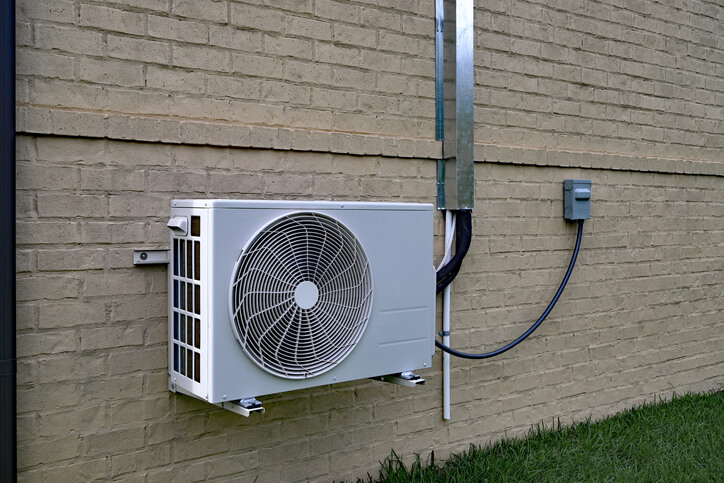
Actually, split-system air conditioners – along with all other AC units – work by pulling warm air from the space and cooling it, then it recirculates that un-warmed air. This requires a compressor to circulate refrigerant as a liquid and an evaporator to turn the refrigerant from liquid to vapor so it can cool the warm air, and then recirculate it in your home. You can learn more about how air conditioners work in this guide.
In the case of a split-system air conditioner, the compressor is housed in a large box located outside your home, while the evaporating coil is usually housed in a closet, attic, or other out-of-sight location. The split nature of the components lends this system to its name.
Why would you want an air conditioner that’s going to take up space both inside and outside your home? There are a few reasons. First, the increased space components are allowed with a split-system format that enables greater efficiency.
If you’re looking for the most efficient AC unit possible, the split system air conditioner units are top of the line choices. Also, because your maintenance tech can walk right up to the condensing unit, maintenance is easier and more affordable.
Packaged air conditioners
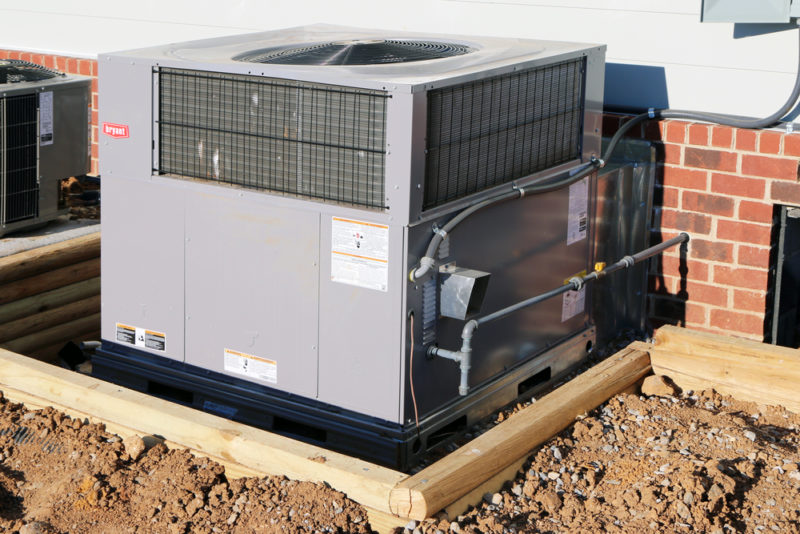
Packaged air conditioners, just as their name implies, are another central air conditioner packaged into a single unit. And this unit is usually placed on the roof, meaning you don’t have to worry about it being an eyesore.
The problem with a package air conditioner is, because its engineering is constrained by size, you can’t get as much efficiency out of a packaged unit as you can a split-system air conditioner.
Additionally, adequate maintenance of this type AC unit usually costs more, because someone will need to climb on your roof for maintenance.
Heat pumps
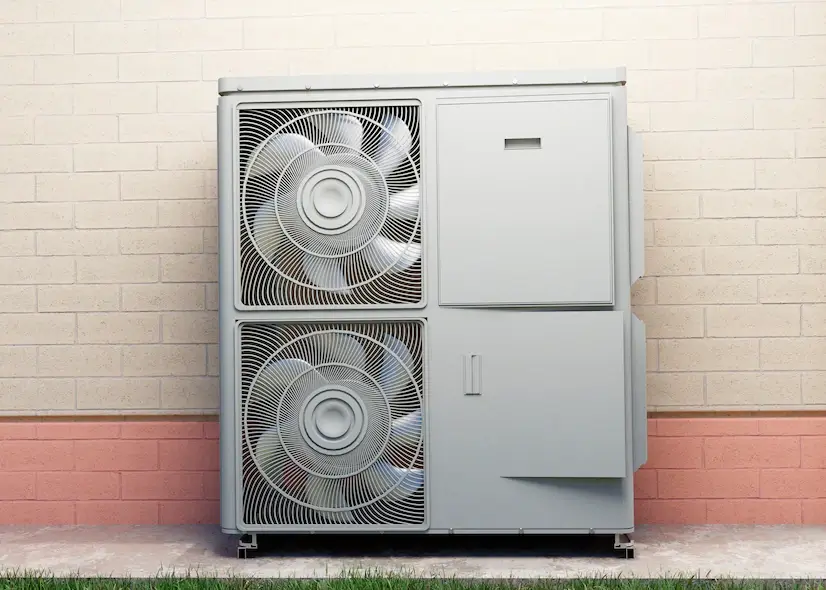
If you want a system that can pull double duty, consider heat pumps, which can typically pull heat from your house to cool it in the summer, then pump heat back in during the winter.
If these units can multitask, why doesn’t everyone choose them? Great question.
There are a couple of things you should know. Generally, heat pumps have a shorter life span than air conditioning units. Since replacing your unit is a sizable cost, this is a major consideration.
Another thing to know about heat pumps is that they lose efficiency as temperatures drop. People in frigid climates usually pair their heat pump with a furnace. At that point, the multitasking functionality that draws people to heat pump systems falls away.
Ductless/mini-split air conditioners
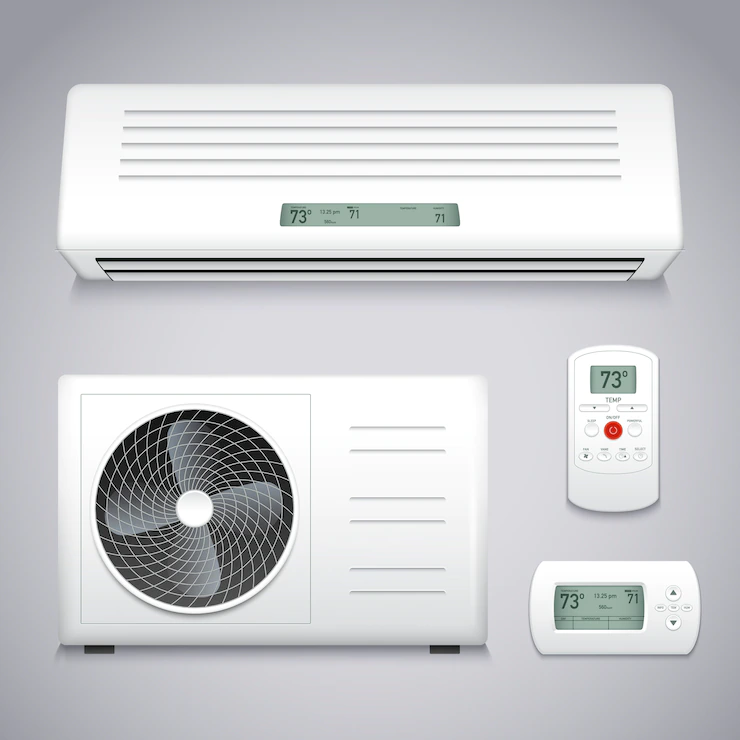
What if you don’t have a ductwork system in your home or you really only need to cool one room that gets hot? Turn to a ductless or mini-split system.
Like the split-system units we discussed above, these air conditioners have an outdoor compressor while the evaporator and air handler are housed indoors. In this case, the indoor components are housed in a small wall-mounted unit that’s usually placed toward the ceiling.
Without any ducts through which the air has to travel, the cooling effects are delivered immediately. This means greater energy efficiency, but the ductless system’s reach is limited. Unless your rooms are small and have large pathways between them, you’ll likely need to place a unit in every room you want to cool.
Important Factors to Consider for Choosing an Air Conditioner
Now that you probably know the type of air conditioner you think is best for your home, it’s time to start shopping for brands and models. But before you go spend your money on any shiny air conditioner, here are some factors you should consider before you buy.
Size
Size is a helpful factor because it narrows your options fairly quickly. If you have ample indoor and outdoor space, a split-system air conditioner can give you top energy efficiency. But if your square footage is limited, a packaged or ductless system might be best for your home.
Square footage isn’t just important for fitting the actual unit itself, either. The larger space you need to cool, the greater cooling capacity you’ll need. Cooling capacity is measured in British thermal units (BTUs). Looking at BTUs can quickly rule out certain systems.
Efficiency/SEER rating
Buying and maintaining your air conditioner is only part of the cost of ownership. Each time you turn it on, you’re going to have to pay to power it. The higher efficiency your unit delivers, the lower your utility bills. So, it’s worth shopping around and checking efficiency ratings.
When it comes to air conditioners, efficiency is measured as a seasonal energy efficiency rating or SEER. This is the total amount of heat your unit can remove – measured in BTUs – divided by the energy it takes to remove it. And because AC units are primarily used in the summer, this is measured based on performance during the annual cooling season. The higher the SEER, the more efficiency you’ll receive.
Warranty
Another cost of ownership consideration is a warranty, which is a pretty big one. When you’re shopping, make sure to compare warranties. Air conditioner repairs can cost thousands of dollars. The more your warranty covers, the less likely you’ll be to get stuck with a big-ticket repair bill.
Maintenance
Your air conditioner’s filters, coils, drains, and other parts all need to be checked on a regular basis. AC Maintenance might seem like a hassle, but it keeps your unit running as efficiently as possible (minimizing your utility bills), while helping you avoid an all-out breakdown, which is typically pretty pricey. Generally, you’ll need a professional to come out and maintain your air conditioner.
PRO TIP: When you’re shopping units, ask your dealer or contractor about maintenance so you have a good understanding of what this to-do will cost you.
Environmental Impacts
In order to maintain an environmentally conscious attitude, it is wiser to purchase newer air conditioner systems. International treaty agreements such as the Montreal Protocol have ensured that the chemical composition of the refrigerant compounds is much more environmentally friendly.
Older air conditioning systems use refrigerant formulas which utilize chlorine atoms which potentially can damage the ozone layer. Thankfully, these compounds have slowly been phased out for usage with newer air conditioning systems.
The Montreal Protocol was established in 1987 and detailed the importance of protecting the climate and highlighted the substances which deplete the ozone layer.
The refrigerants used in modern air conditioning systems adhere to new regulations and enable you to cool your home in a way which does not damage the ozone layer.
These changes in refrigerants used in air conditioning systems have no doubt contributed greatly to the reduction in the global production, consumption, and emissions of ODSs, or ozone-depleting substances.
The Right Process to Buy an Air Conditioner
Now that you’re informed, it’s time to start shopping. We recommend the following steps:
1. Make some personal decisions on your own preferences
While we definitely advise getting a professional involved before deciding on an air conditioner, making some choices on your own can ensure you’re not swayed by a one-off promo or a specific dealer’s personal preferences.
Think through where you want the air conditioner to go so you can know if you want a packaged, split-system, or ductless system. Or, if you think you want something to pull double-duty, research heat pump options.
Also, measure the size of your space and use an air conditioner sizing calculator to figure out how many BTUs of cooling capacity you’ll need. You can also use one of the Energy.gov energy efficiency calculators – which can be used for air conditioners and heat pumps – to find out how much a higher SEER can save you annually.
Once you know your size specs, your BTU requirements, and your ideal SEER, it’s time to talk to some professionals.
2. Contact contractors and dealers
If there’s a specific brand of air conditioner that’s caught your eye, find one of its dealers (the brand website should have this information) and get in touch. But don’t stop there. Contact some HVAC contractors in your area too. Getting estimates from multiple parties ensures you’re getting the best price on your unit. Don’t forget to ask about warranties and maintenance, too.
Plus, this is the first contact with a company that could serve you for the foreseeable future. If you find a contractor you particularly like or a company that gives you exemplary service, make a note. Assuming you choose a unit they service, the company can be your air conditioner maintenance provider for years to come.
3. Schedule a pre-install evaluation
Once you’ve narrowed down your options based on the contractors or dealers you like and the estimates, it’s time to make sure your unit is sized correctly.
This means getting a professional to come to your house for a pre-install evaluation, which you’ll usually have to pay for. But it’s a worthwhile expense because it ensures you don’t pay for more air conditioning capacity than you need.
This evaluation should include a Manual J load calculation, during which your air conditioning professional determines the right cooling capacity for your air conditioner based on the size of your home and how much heat it gains throughout the day.
Your evaluation might also include a check of your ductwork system for any leaks. Before your evaluation, ask what it includes to make sure you’re getting the most bang for your buck.
4. Schedule installation
The time has come. You’re ready to get that carefully selected air conditioner installed in your home. Schedule it with the contractor or dealer of your choice. Remember that summer is usually peak season, so don’t put this off.
Scheduling your installation during the cooler months ensures you can easily get on the company’s calendar – and it might even help shave a little off installation costs.
With this guide, you’re ready to shop intelligently for the right air conditioning unit for your home. Do a little homework to understand your house’s specific cooling needs better and you’ll be able to rest easily knowing you’ve made the best choice for keeping your home cool.
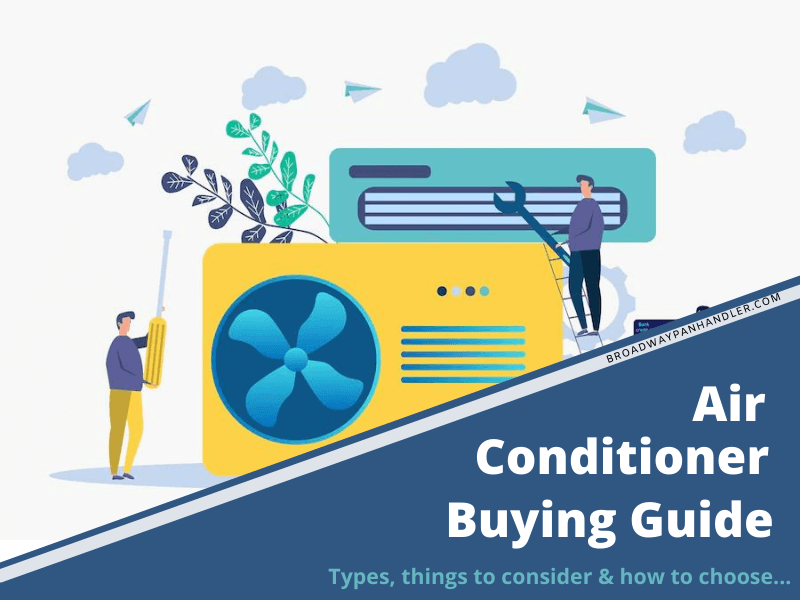
My uncle wants to build a remote working space that boasts the comfort he’s experiencing while working in the office. I like your suggestion of investing in a split air conditioner since it gives you control over a room’s temperature. It might be a good idea for him to find an air conditioning expert for advice regarding this project.
Comments are closed.